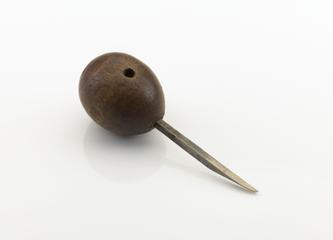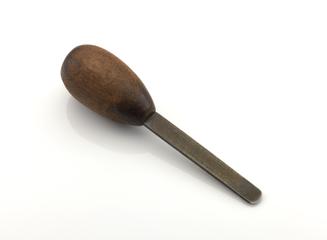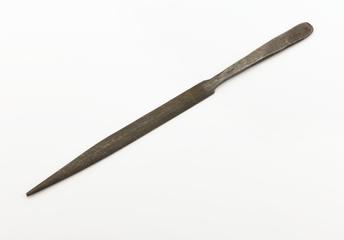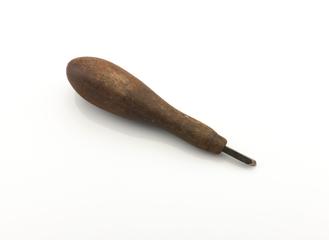
Whitworth's self-acting screw feed reversing tool box planing machine, 1842.
- Made:
- 1842 in Manchester
- maker:
- Joseph Whitworth
Whitworth's self-acting screw feed reversing tool box planing machine, 1842. The planing machine cuts flat surfaces in metal components. This power-driven planing machine drives a cutting tool over the workpiece, removing a small amount of metal in a straight line. It then steps the cutter to one side, machining overlapping cuts until the entire surface has been covered. It was a significant improvement over previous designs, offering greater precision and ease of operation. Accurately flat surfaces were essential for a wide range of engineering products; machines like this were used in the construction of steam engines, textiles spinning equipment and to make other machine tools.
This power-driven self-acting planing machine, made by Joseph Whitworth & Co, was patented in 1835-9 by Sir Joseph Whitworth and was known in the shops as a 'Jim Crow' because of its reversing tool holder. The expression derived from a popular song, brought out in 1836, which contained the lines :
'Wheel about, and turn about, and do just so :
And every time you wheel about, jump Jim Crow.'
A lead-screw in the middle of the bed of the machine, driven by fast and loose pulleys and a three-bevel-wheel reversing arrangement, transmits motion to the V-guided table by means of a pair of antifriction wheels on its underside, mounted on studs perpendicular to. the axis of the screw, with the thread of which their rims engage. The cross-slide is supported on and is actuated by two vertical screws connected by bevel gear and shaft which is hand-operated. The swivelling tool-box is on a screw on the cross-slide and is fed by a ratchet and pulley. The latter is actuated by a band from a rocking pulley on the same shaft as a pinion moved by a rack rod alongside the bed. This rod is moved to and fro by the table coming against stops. By means of guide-pulleys, the band also reverses the tool holder at the end of each stroke, thus enabling it to cut in both directions. The bed of the machine is 4 ft by 15 inches; the maximum height under the tool is 12 inches.
Details
- Category:
- Hand and Machine Tools
- Object Number:
- 1908-20
- Materials:
- cast iron, steel (metal) and paint
- Measurements:
-
: in.
- type:
- planing machines
- credit:
- Royal College of Science




